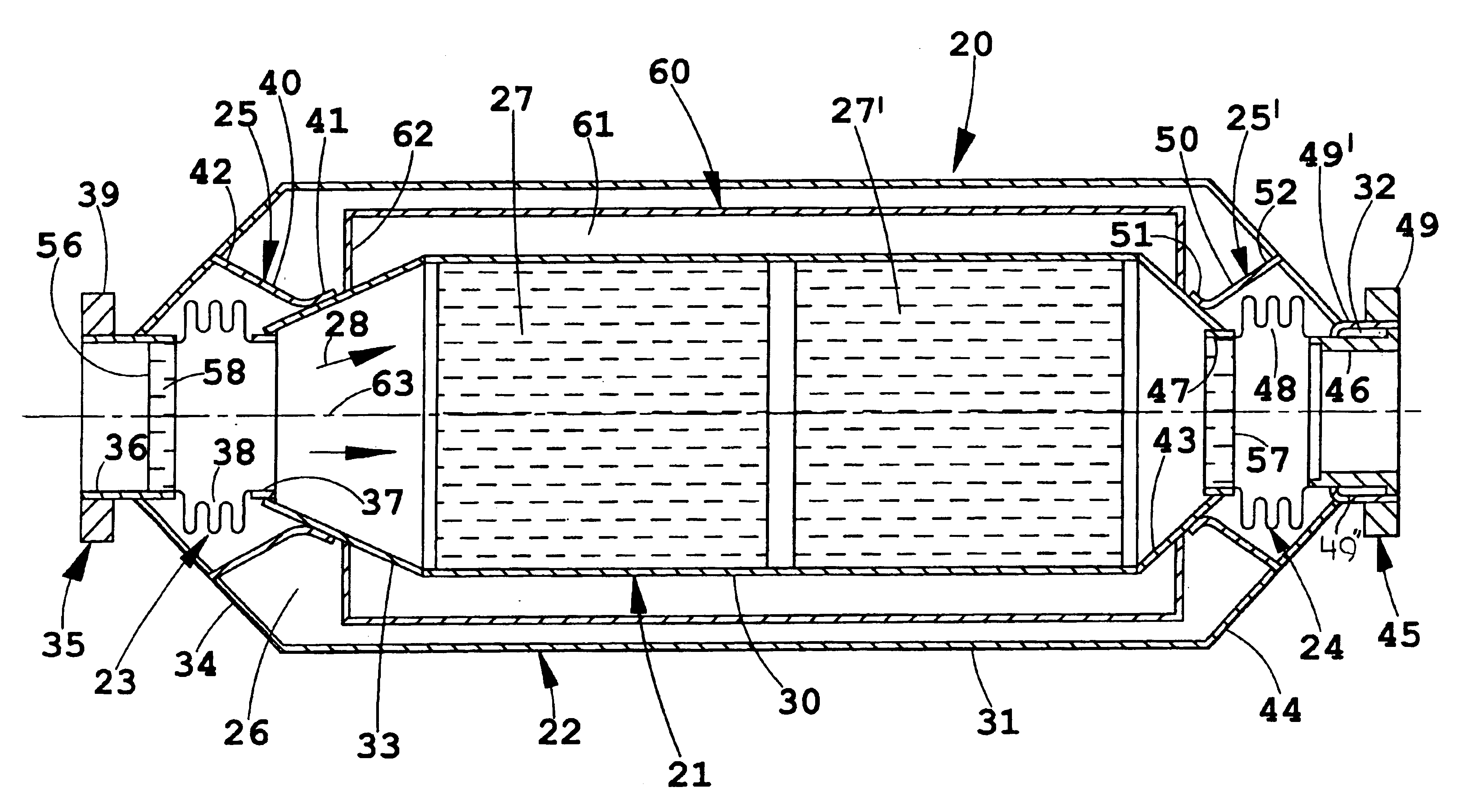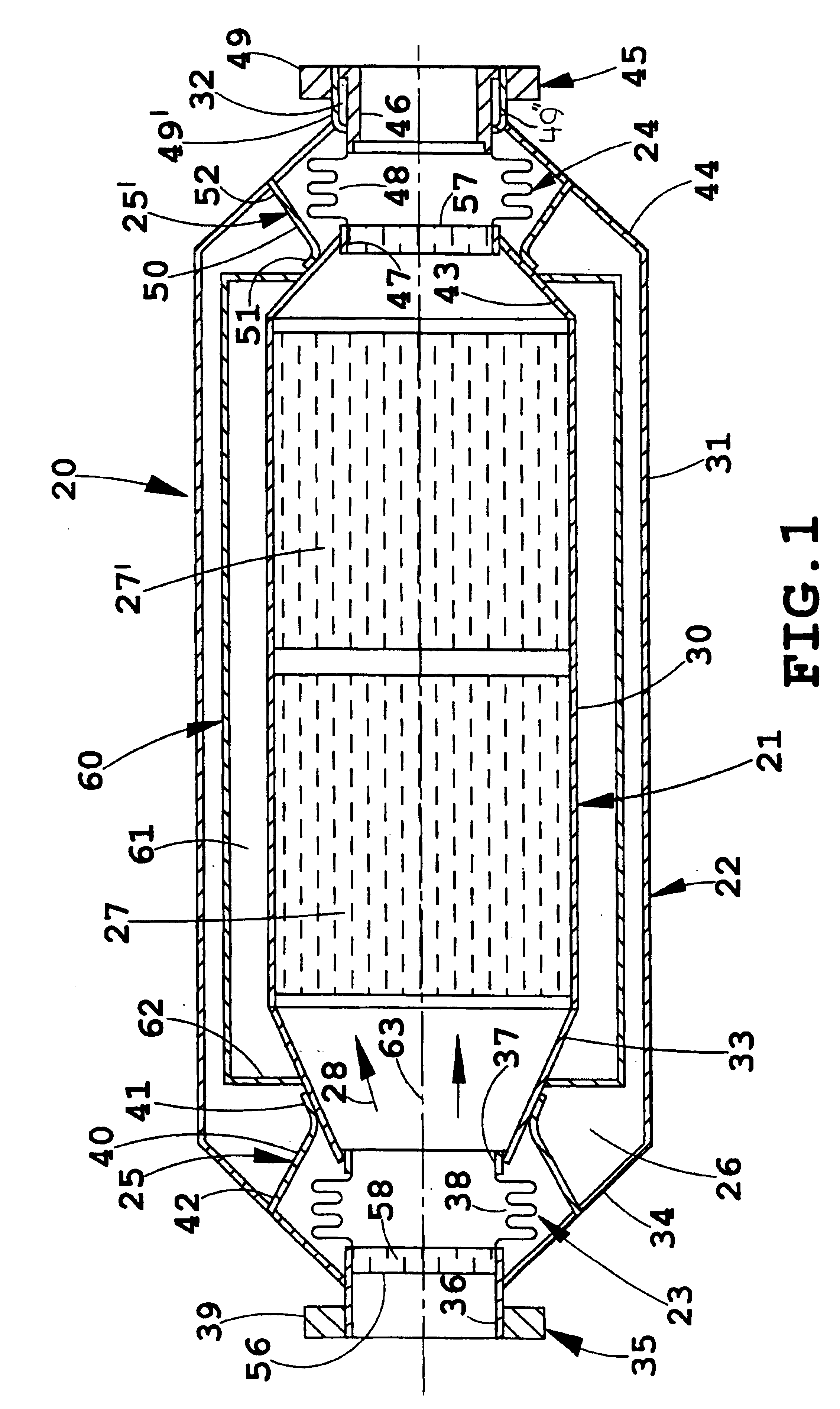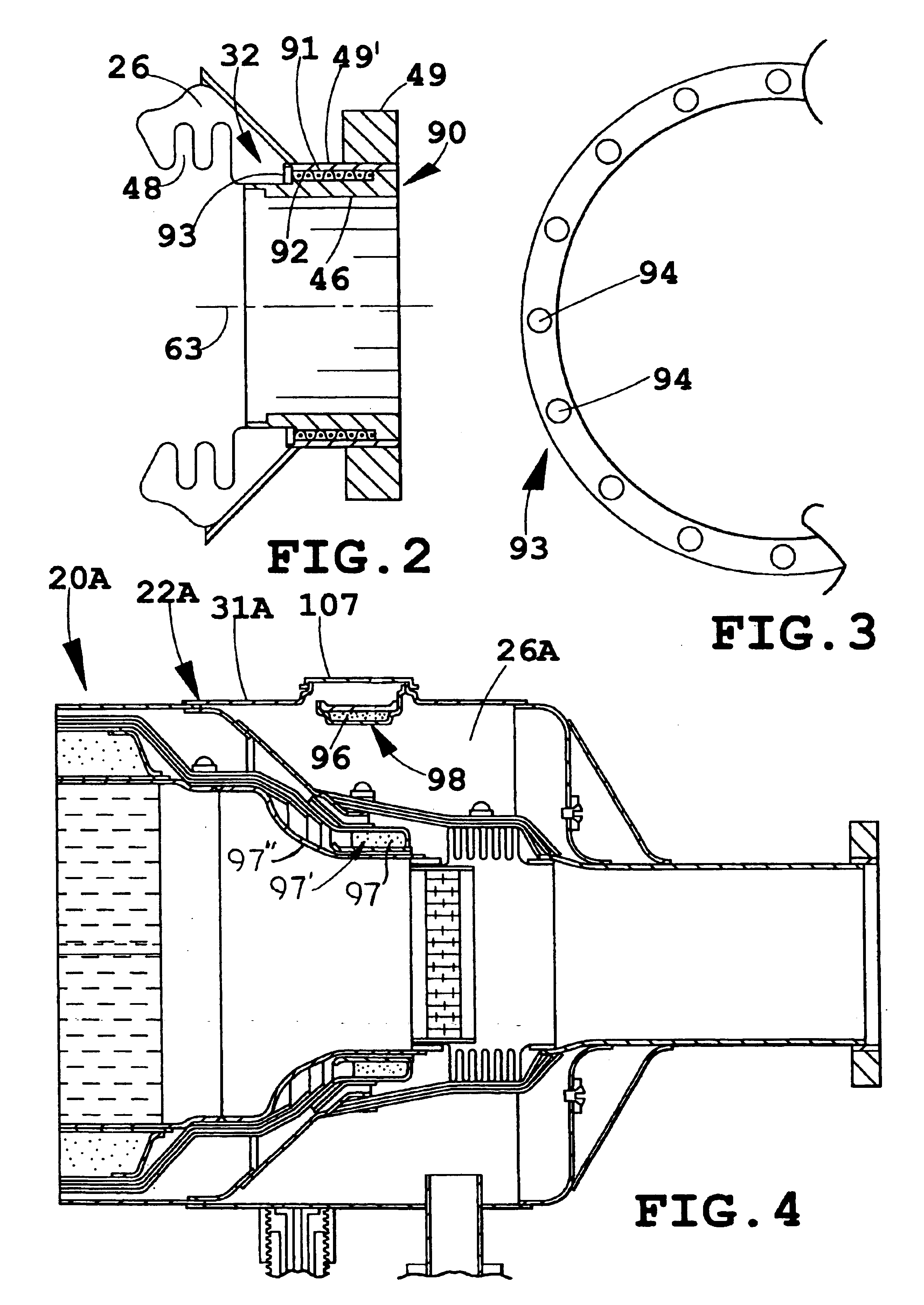Vacuum-insulated exhaust treatment devices, such as catalytic converters, with passive controls
a treatment device and vacuum-insulated technology, applied in the direction of machines/engines, mechanical equipment, separation processes, etc., can solve the problems of large tailpipe emissions, exhaust gases passing, and inability to react efficiently, so as to reduce undesirable emissions
- Summary
- Abstract
- Description
- Claims
- Application Information
AI Technical Summary
Benefits of technology
Problems solved by technology
Method used
Image
Examples
Embodiment Construction
[0045]The illustrated catalytic converter 20 (FIG. 1) is a vacuum-insulated converter having an inner housing 21 positioned within and insulated from an outer housing 22. Expansion joints 23 and 24 are provided at each end of the inner housing 21, and supports 25 and 25′ are provided to support the inner housing 21 within the outer housing 22 while maintaining a vacuum-insulated cavity 26 forming a relatively constant gap around the inner housing 21. A sufficient vacuum is drawn on the cavity 26 so as to eliminate heat loss from air conduction and convection. The supports 25 and 25′ within the converter design are particularly configured to accommodate longitudinal thermal expansion of the hot inner housing 21 relative to the cool outer housing 22. The internal supports 25 and 25′ bridge the vacuum insulation and are sufficiently stiff to accommodate dynamic (vibration and impact) loads at temperature, yet are flexible enough to accommodate unequal thermal expansion of the inner and...
PUM
| Property | Measurement | Unit |
|---|---|---|
| angle | aaaaa | aaaaa |
| thick | aaaaa | aaaaa |
| temperature | aaaaa | aaaaa |
Abstract
Description
Claims
Application Information
 Login to View More
Login to View More - R&D
- Intellectual Property
- Life Sciences
- Materials
- Tech Scout
- Unparalleled Data Quality
- Higher Quality Content
- 60% Fewer Hallucinations
Browse by: Latest US Patents, China's latest patents, Technical Efficacy Thesaurus, Application Domain, Technology Topic, Popular Technical Reports.
© 2025 PatSnap. All rights reserved.Legal|Privacy policy|Modern Slavery Act Transparency Statement|Sitemap|About US| Contact US: help@patsnap.com



